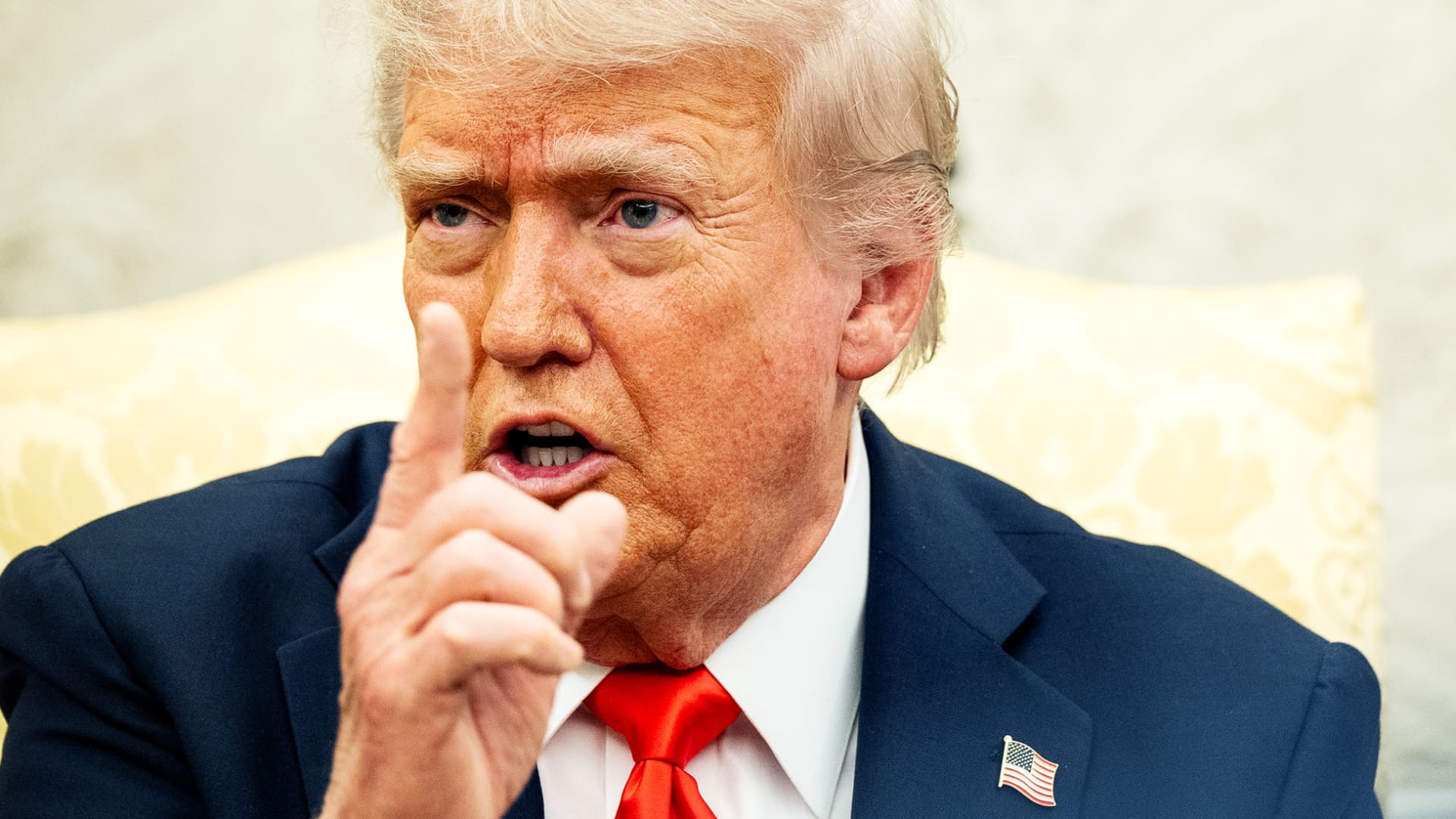Indranil Aditya | Nurphoto | Getty Images
This also marks a third straight rate cut since February, and comes below the median estimates of 5.75% in a Reuters poll.
RBI Governor Sanjay Malhotra said in a livestream that the move was taken as inflation had significantly softened, and growth has been “lower than our aspirations amidst a challenging global environment and heightened uncertainty.”
The decision came after a better-than-expected GDP growth figure in its fiscal fourth quarter, with the economy expanding 7.4% year-on-year compared to the 6.7% estimated by economists polled by Reuters.
However, the central bank held its full-year GDP estimate at 6.5%, marking a sharp slowdown compared to the 9.2% seen in the previous financial year, which ended in March.
“The Indian economy presents a picture of strength, stability and opportunity,” Malhotra said.
The RBI had highlighted growth concerns in its previous meetings amid the threat of tariffs from the United States.
Separately, the decision also comes as India’s inflation is largely on a downtrend, which also affords the RBI room to cut rates.
The most recent headline inflation reading for April was at 3.16%, its lowest level since July 2019.
The RBI had revised its inflation outlook to 3.7% in the current financial year, down from its earlier figure of 4%, and Malhorta said that inflation could undershoot the target.
He said that most projections point towards continued moderation in the prices of key commodities, including crude oil.
However, the central bank will still need to remain watchful of weather-related uncertainties and the evolving tariff-related concerns with their impact on global commodity prices, Malhotra added.
Given the outsized cut in the policy rate, the RBI said that there is limited room for monetary policy to support growth, and will change its monetary policy stance to “neutral” from “accommodative.”
“From here onwards, the [Monetary Policy Committee] will be carefully assessing the incoming data and the evolving outlook to chart out the future course of monetary policy in order to strike the right growth-inflation balance,” the RBI governor said.
Shilan Shah, Deputy Chief Emerging Markets Economist from Capital Economics, said the 50-basis point cut meant that the RBI had ended its easing cycle “with a bang.”
The central bank had taken advantage of the “chunky fall” in inflation to frontload policy loosening, resulting in the 50 basis points cut, he added.

















Leave a Reply